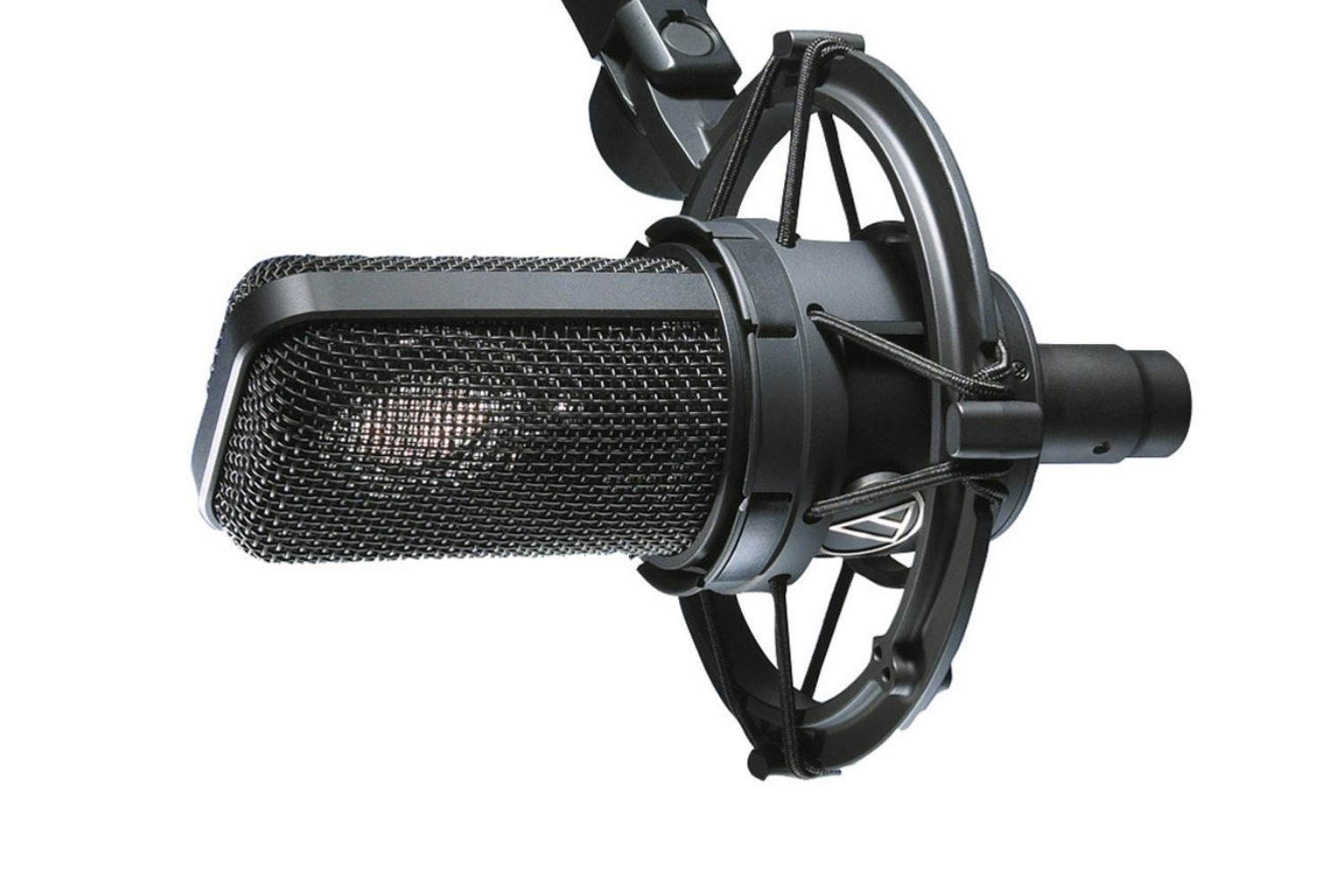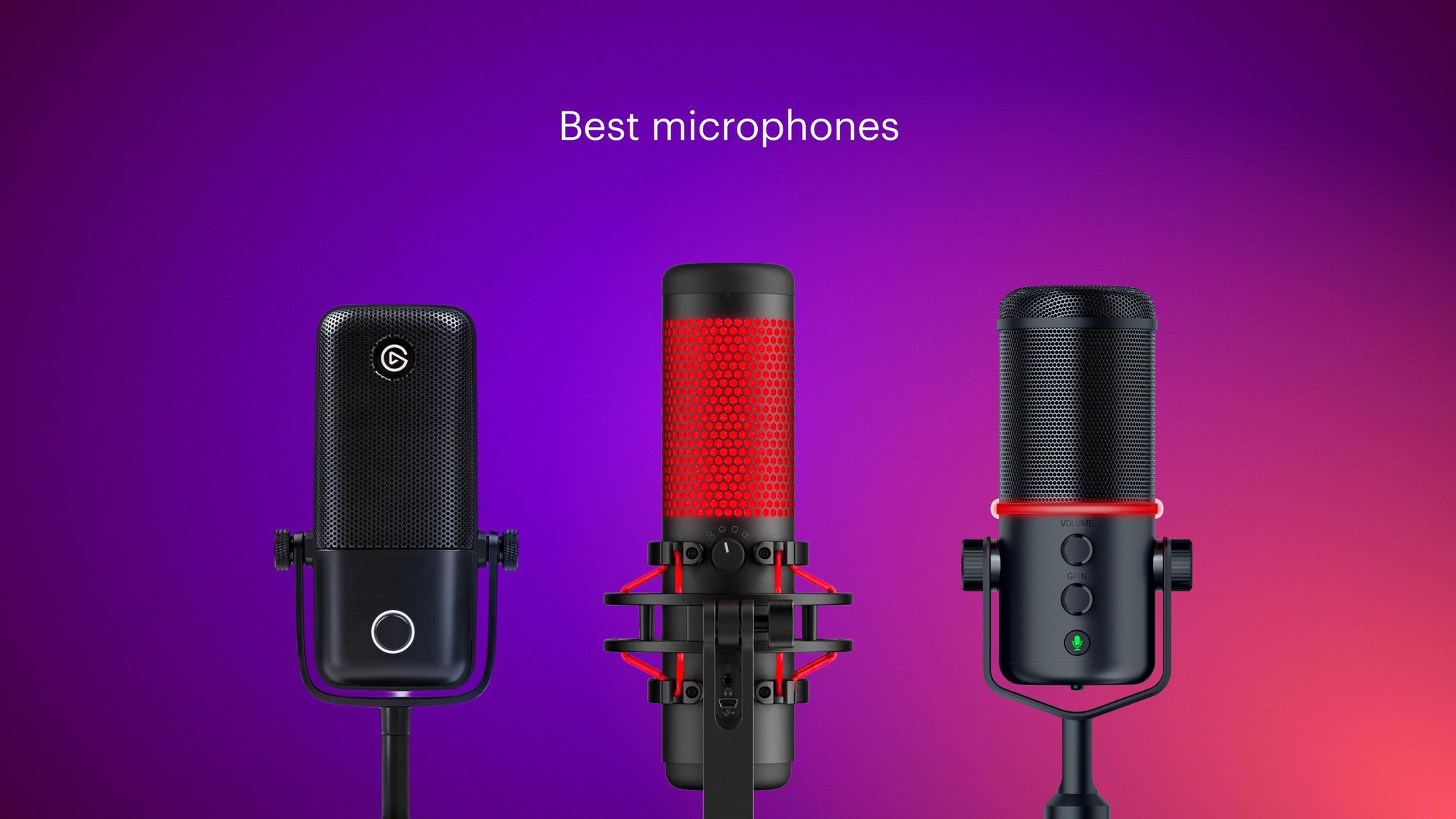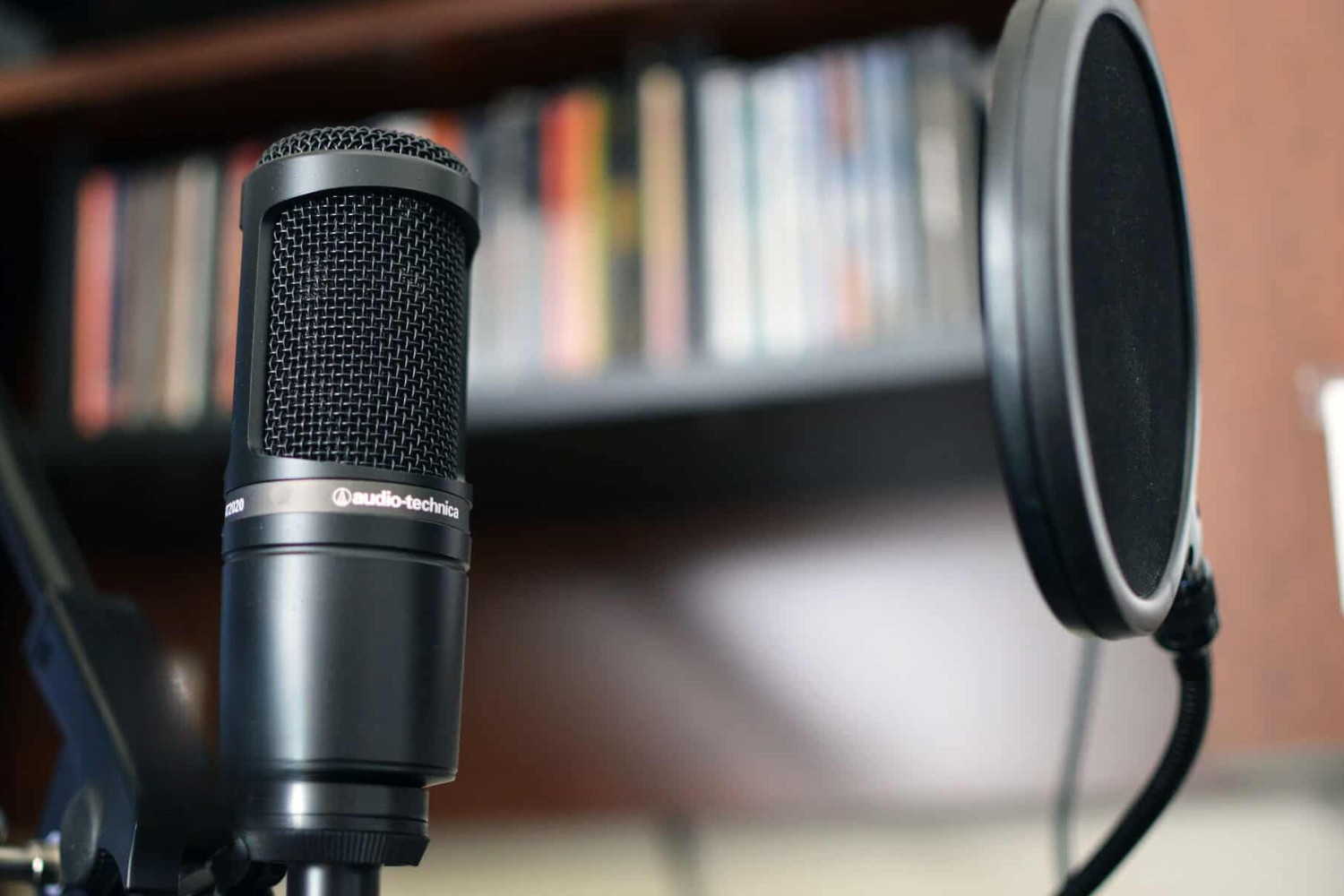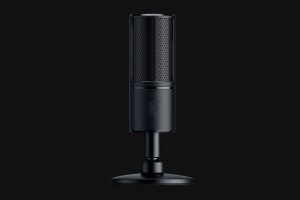Introduction
Are you ready to elevate your audio recording game to the next level? The Audio-Technica AT2035 Cardioid Condenser Microphone is a powerful tool that can help you achieve professional-quality sound for your podcasts, music recordings, voiceovers, and more. However, to harness the full potential of this exceptional microphone, you'll need to ensure that you have the right setup and equipment in place.
In this comprehensive guide, we'll walk you through everything you need to know about using the Audio-Technica AT2035 Cardioid Condenser Microphone. From understanding its features to setting it up for optimal performance, we've got you covered. Whether you're a seasoned audio engineer or a newcomer to the world of recording, this guide will provide you with valuable insights and practical tips to make the most of your AT2035 microphone.
So, grab your headphones, set up your recording space, and let's dive into the essential components and techniques required to unleash the full potential of the Audio-Technica AT2035 Cardioid Condenser Microphone. Whether you're a musician, podcaster, voice actor, or content creator, this versatile microphone has the capability to capture the richness and clarity of your voice or instruments, and we're here to ensure you have everything you need to make it happen.
Audio-Technica AT2035 Cardioid Condenser Microphone Overview
The Audio-Technica AT2035 Cardioid Condenser Microphone is a versatile and reliable tool designed for capturing crystal-clear audio with exceptional detail and low noise. Boasting a large diaphragm and a cardioid polar pattern, this microphone is well-suited for a wide range of recording applications, including vocals, acoustic instruments, and overhead drum miking.
One of the standout features of the AT2035 is its ability to handle high sound pressure levels, making it an excellent choice for recording loud sources without distortion. Whether you’re belting out powerful vocals or capturing the thunderous resonance of a drum kit, the AT2035 delivers a balanced and articulate sound reproduction.
Equipped with a switchable 80 Hz high-pass filter and a 10 dB pad, the AT2035 offers additional flexibility to adapt to different recording scenarios. The high-pass filter enables you to reduce low-frequency rumble and proximity effect, while the pad allows you to attenuate the input signal when recording extremely loud sound sources, ensuring optimal audio capture in diverse environments.
With its robust construction and attention to sonic precision, the AT2035 is a go-to choice for home and professional studios alike. Its wide dynamic range and extended frequency response (20 Hz – 20 kHz) enable it to faithfully reproduce the nuances of the human voice and musical instruments, making it a valuable asset for musicians, podcasters, voiceover artists, and content creators.
Whether you’re recording in a controlled studio environment or capturing performances on the go, the Audio-Technica AT2035 Cardioid Condenser Microphone stands as a reliable and capable companion, ready to elevate the quality of your audio productions with its exceptional clarity and fidelity.
Necessary Equipment for Using the AT2035
Before diving into the world of professional audio recording with the Audio-Technica AT2035 Cardioid Condenser Microphone, it’s essential to ensure that you have the necessary equipment to support its optimal performance. Here’s a breakdown of the key components you’ll need to complement the capabilities of the AT2035:
- Microphone Stand: A sturdy, adjustable microphone stand is crucial for positioning the AT2035 securely and precisely. Whether you opt for a boom stand, desk stand, or floor stand, ensure that it provides stability and flexibility to accommodate various recording setups.
- Pop Filter: To minimize plosives and sibilance in vocal recordings, a pop filter is indispensable. This simple yet effective accessory helps to diffuse the impact of plosive sounds, such as “p” and “b,” and ensures a clean, clear vocal capture.
- Shock Mount: Investing in a shock mount for the AT2035 is highly recommended to isolate the microphone from vibrations and handling noise. By suspending the microphone, a shock mount helps maintain a steady and undisturbed recording environment, especially when working in dynamic or mobile recording settings.
- XLR Cable: As the AT2035 utilizes an XLR connection, a high-quality XLR cable is essential for connecting the microphone to your audio interface or recording device. Look for a durable, shielded cable to minimize interference and ensure reliable signal transmission.
- Audio Interface: To interface the AT2035 with your computer or recording setup, an audio interface with phantom power is a must. The interface not only provides the necessary preamp for the microphone but also offers connectivity for monitoring and playback.
- Headphones: Monitoring your recordings is crucial for achieving optimal results. A pair of studio-quality headphones allows you to listen critically to the captured audio, ensuring accuracy in performance and sound quality assessment.
By assembling these essential components, you’ll create a well-equipped and supportive environment for the Audio-Technica AT2035 Cardioid Condenser Microphone to shine. With the right gear in place, you’ll be ready to unleash the full potential of the AT2035 and embark on a journey of capturing pristine, professional-grade audio with confidence and precision.
Setting Up the AT2035 Microphone
Setting up the Audio-Technica AT2035 Cardioid Condenser Microphone involves a series of essential steps to ensure optimal performance and audio quality. Let’s walk through the process of preparing and positioning the AT2035 for a successful recording session:
- Mounting the Microphone: Secure the AT2035 on a compatible microphone stand using a shock mount for vibration isolation. Position the microphone at an appropriate distance and angle relative to the sound source, ensuring that it captures the desired audio with clarity and precision.
- Connecting the XLR Cable: Attach one end of the XLR cable to the AT2035’s output and the other end to your audio interface’s XLR input, making sure to secure the connections snugly. If your audio interface features phantom power, activate it to power the microphone.
- Applying a Pop Filter: Affix a pop filter in front of the AT2035 to mitigate plosive sounds and minimize unwanted breath noise during vocal recordings. Position the pop filter at an optimal distance from the microphone to effectively diffuse air bursts without obstructing the microphone’s diaphragm.
- Adjusting the Polar Pattern and Filters: Depending on your recording requirements, set the AT2035’s polar pattern to cardioid for focused sound capture or adjust it to the desired pattern for specific recording scenarios. Additionally, engage the high-pass filter if necessary to attenuate low-frequency rumble and activate the pad when recording loud sources to prevent distortion.
- Monitoring and Testing: Connect your headphones to the audio interface and enable direct monitoring to listen to the microphone’s input in real time. Test the microphone by speaking or performing into it, adjusting the input gain on the audio interface to achieve optimal signal levels without clipping.
Once the AT2035 is properly set up and connected, you’re ready to embark on your recording journey with confidence, knowing that your microphone is primed to deliver exceptional audio fidelity and capture the nuances of your performances with precision.
Tips for Getting the Best Sound Quality
While the Audio-Technica AT2035 Cardioid Condenser Microphone is renowned for its exceptional audio reproduction, employing the following tips can further enhance the sound quality and optimize the microphone’s performance:
- Optimize Room Acoustics: Choose a recording environment with minimal ambient noise and favorable acoustics. Consider using acoustic treatment such as sound-absorbing panels or bass traps to minimize reflections and create a controlled recording space.
- Maintain Proper Mic Technique: Encourage vocalists and instrumentalists to maintain consistent mic positioning and distance to ensure uniform sound capture. Educate performers about proper microphone technique to maximize the AT2035’s potential and achieve balanced and natural recordings.
- Experiment with Mic Placement: Explore different microphone placements to discover the optimal position for capturing specific instruments or vocals. Adjust the distance and angle of the AT2035 to achieve the desired sound character and balance in the recordings.
- Utilize High-Quality Cables: Invest in high-quality XLR cables to maintain signal integrity and minimize interference. Reliable cables contribute to stable signal transmission, safeguarding the fidelity of the captured audio and reducing the risk of signal degradation.
- Monitor and Adjust Input Levels: Continuously monitor input levels on the audio interface to prevent signal clipping and distortion. Adjust the input gain to achieve a healthy signal level without exceeding the microphone’s or interface’s capacity, ensuring clean and undistorted recordings.
- Engage in Sound Checks: Conduct thorough sound checks before recording sessions to identify and address any potential issues. Verify that all connections are secure, and test the microphone’s functionality and signal flow to preemptively resolve any technical hitches.
- Take Advantage of Post-Processing Tools: Leverage digital audio workstations and post-processing plugins to refine and enhance the recorded audio. Apply EQ, compression, and other processing tools to sculpt the sound and address any imperfections, further elevating the quality of the AT2035’s recordings.
By implementing these tips, you can harness the full potential of the Audio-Technica AT2035 Cardioid Condenser Microphone and elevate the quality of your recordings to new heights. With careful attention to detail and a commitment to sonic excellence, you’ll unlock the remarkable capabilities of the AT2035, capturing stunning audio with unparalleled clarity and fidelity.
Conclusion
As we conclude our exploration of the Audio-Technica AT2035 Cardioid Condenser Microphone, it’s evident that this versatile and reliable microphone stands as a valuable asset for audio professionals, musicians, podcasters, and content creators alike. With its exceptional sound reproduction capabilities, robust construction, and versatile features, the AT2035 empowers users to capture pristine, professional-grade audio with ease and precision.
By understanding the necessary equipment for optimal performance, mastering the setup process, and implementing best practices to enhance sound quality, users can fully harness the potential of the AT2035. From selecting the right microphone stand and accessories to fine-tuning mic placement and leveraging post-processing tools, every aspect of utilizing the AT2035 contributes to elevating the quality of audio recordings.
Whether you’re embarking on vocal recordings, acoustic instrument captures, podcasting endeavors, or studio productions, the AT2035 is poised to deliver exceptional results, capturing the nuances and subtleties of sound with remarkable fidelity. Its ability to handle high sound pressure levels, switchable polar patterns, and versatile filters make it a versatile and adaptable tool for a wide range of recording scenarios.
As you venture into the realm of professional audio recording with the AT2035, remember that meticulous attention to detail, a commitment to sonic excellence, and a willingness to experiment and refine your techniques will ultimately lead to outstanding results. With the right setup, technique, and creativity, the AT2035 becomes a conduit for transforming sound into art, empowering you to craft captivating and immersive audio experiences.
In the hands of skilled audio engineers and passionate creators, the Audio-Technica AT2035 Cardioid Condenser Microphone transcends being a mere tool and becomes an instrument of sonic expression, capturing the essence of performances with unparalleled clarity and fidelity. Embrace the journey of sonic exploration, and let the AT2035 be your steadfast companion in realizing your audio recording aspirations.

























